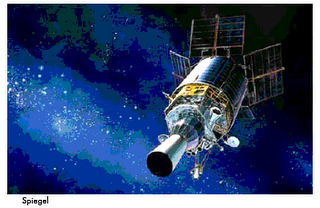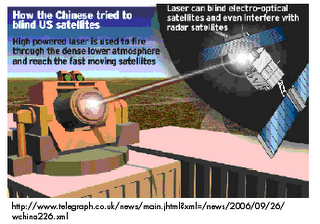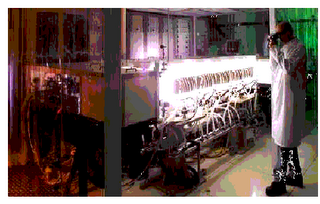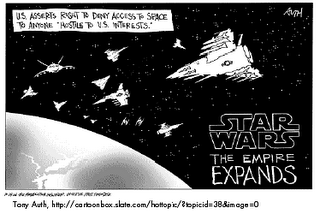New Enlightenments in the Orbit?
1 Towards a Metaphor of Togetherness
Time is coming that we have to learn to live together at the same place without any chances of excluding each other.
Earlieron we solved this problem of living together with the help of the operation of separation and exclusion. Nobody had to live at the exact same place as someone else. The separation of two beings has given the space and possibility for interaction and cooperation between these entities. The separation was the fundamental condition for the possibility of interaction (cooperation, communication, co-creation, etc.).
Now it seems that we have reached the point that we have to develop a concept of living together in which we have to take place together simultaneously at the exact same place.
It will turn out that this way of living together is prior to any separation and therefore to any form of interaction and cooperation.
In classical terms two objects must be identical if they are not different. They are different if it is possible to separate them.
How could togetherness be thought and conceptualized whithout the assumptions of identity and distinctness and the procedures of identification and separation?
How could this be possible? First of all, it isn’t possible at all on the premises of the traditional concepts of place, space, object, time, state, separation and interaction. The reason is obvious, all these concepts are fundamentally rooted in the ontological and logical principle of identity.
In technical terms, how could it be possible that two different states of a computation could occupy the very same place in the computing space of their machine?
Obviously this is not possible at all. It isn’t possible neither from the point of view of the machine nor of the basic concepts of the programming languages. It is impossible for logical and physical reasons.
Simply take the example of the definition of EQ in the programming language LISP:
EQxy =def if (eval x) = (eval y) then true
else false
The equality EQ of x and y is strict, it is fulfilled or it is not – tertium non datur. The logic which is ruling these conditions is strictly binary. It is in whatever form a two-valued logical system which is ruling the conditions of equality. All in all, there are three levels of equality involved ruling this definition: the definitional (=def), the defined (EQ) and the defining (=).
There is also no chance on the level of implementation on a more physical level of a machine. Two states are equal if they have the same address, and if they have the same address they have the identical physical realization which is the equality (=).
It seems that there is no chance to escape this situation.
2 America wants it all - life, the Universe and everything
Again:
"In technical terms, how could it be possible that two different states of a computation could occupy the very same place in the computing space of their machine?
Obviously this is not possible at all."
We can paraphrase this statement into a more accessible terminology.
In political and military strategies, how could it be possible that two different states of this planet could occupy the very same place in the power space of their hegemony?
Obviously this is not possible at all.
I surely always thought that such paraphrases would "automatically" happen in the mind of the readers of my texts.
Obviously this is not the case at all.
OK, restart reading, or enjoy DERRIDA'S MACHINES.
Therefore I will give some hints in this Blog which, in my opinion, are unnecessary, because of their self-evidence. To study, say ancient Chinese and Pythagorean Number Theory and Logic, is not a lost academic game and also not a "brainfuck" at all, but of enormous help to surpass today’s dilemma of digitalism and its self-destruction. My hope is, that with such studies we will be better “weaponed” to “fight” the “conflicts” on the way through to a development of polycontextural logic and morphogrammatics, as first steps beyond contemporary global madness.
There is nothing shiny in morphogrammatics, nor is there a masters voice to follow.
But first I will deal with the (high)lights of enlightened reason.
Keywords:
light, lighting, lightening, enlightenment, laser beam, Lichtung, blind, blinding, blenden (germ.).
To make a rest (Feierabend), enlight your cigarette, then go and visit Paul Feyerabend
And now, let’s learn the News from America!
"The Bush administration has staked an aggressive new claim to dominate space - rejecting any new treaties that seek to limit the United States' extraterrestrial activities and warning that it will oppose any nations that try to get in its way."
Obviously, again, these logocentristics at the Pentagon have forgotten the possibility of extraterrestrial visitors, probably not actually on the way yet.
America wants it all - life, the Universe and everything
"The United States considers space capabilities -- including the ground and space segments and supporting links -- vital to its national interests," the policy said.
"Consistent with this policy, the United States will: preserve its rights, capabilities, and freedom of action in space; dissuade or deter others from either impeding those rights or developing capabilities intended to do so; take those actions necessary to protect its space capabilities; respond to interference; and deny, if necessary, adversaries the use of space capabilities hostile to U.S. national interests."
The White House said the policy does not call for the development or deployment of weapons in space.
Cartoon from Tony Auth

"This policy emphasizes that the United States is committed to peaceful uses of space by all nations and that space systems enjoy the right of free passage," National Security Council spokesman Frederick Jones said.
He said the United States maintains the right of self-defense and the protection of its interests and assets in space.
"Protection of space assets does not imply some sort of forceful action," he said. "There is a broad range of ways to protect our space capabilities" such as system hardening, encryption, maneuvering and other methods.
"The new policy is consistent with previous national space policies in this regard," he said.
Jones said the challenges and threats facing the United States have changed in the decade since the space policy was last updated.
"Technology advances have increased the importance of and use of space," he said. "Now,, we depend on space capabilities for things like: ATMs, personal navigation, package tracking, radio services, and cell phone use."
The new policy was first reported by The Washington Post.
Here it is:

The President authorized a new national space policy on August 31, 2006 that establishes overarching national policy that governs the conduct of U.S. space activities. This policy supersedes Presidential Decision Directive/NSC-49/NSTC-8, National Space Policy, dated September 14, 1996.
1. Background
[...]
For five decades, the United States has led the world in space exploration and use and has developed a solid civil, commercial, and national security space foundation. Space activities have improved life in the United States and around the world, enhancing security, protecting lives and the environment, speeding information flow, serving as an engine for economic growth, and revolutionizing the way people view their place in the world and the cosmos. Space has become a place that is increasingly used by a host of nations, consortia, businesses, and entrepreneurs.
In this new century, those who effectively utilize space will enjoy added prosperity and security and will hold a substantial advantage over those who do not. Freedom of action in space is as important to the United States as air power and sea power. In order to increase knowledge, discovery, economic prosperity, and to enhance the national security, the United States must have robust, effective, and efficient space capabilities.
2. Principles
The conduct of U.S. space programs and activities shall be a top priority, guided by the following principles:
- The United States is committed to the exploration and use of outer space by allnations for peaceful purposes, and for the benefit of all humanity. Consistent with this principle, “peaceful purposes” allow U.S. defense and intelligence-related activities in pursuit of national interests;
- The United States rejects any claims to sovereignty by any nation over outer spaceor celestial bodies, or any portion thereof, and rejects any limitations on the fundamental right of the United States to operate in and acquire data from space;
- The United States will seek to cooperate with other nations in the peaceful use ofouter space to extend the benefits of space, enhance space exploration, and to protect and promote freedom around the world;
- The United States considers space systems to have the rights of passage throughand operations in space without interference. Consistent with this principle, the United States will view purposeful interference with its space systems as an infringement on its rights;
- The United States considers space capabilities -- including the ground and spacesegments and supporting links -- vital to its national interests. Consistent with this policy, the United States will: preserve its rights, capabilities, and freedom of action in space; dissuade or deter others from either impeding those rights or developing capabilities intended to do so; take those actions necessary to protect its space capabilities; respond to interference; and deny, if necessary, adversaries the use of space capabilities hostile to U.S. national interests;
• The United States will oppose the development of new legal regimes or other re-strictions that seek to prohibit or limit U.S. access to or use of space. Proposed arms control agreements or restrictions must not impair the rights of the United States to conduct research, development, testing, and operations or other activities in space for U.S. national interests; and
• The United States is committed to encouraging and facilitating a growing and en-trepreneurial U.S. commercial space sector. Toward that end, the United States Government will use U.S. commercial space capabilities to the maximum practical extent, consistent with national security.
3. United States Space Policy Goals
The fundamental goals of this policy are to:
- Strengthen the nation’s space leadership and ensure that space capabilities areavailable in time to further U.S. national security, homeland security, and foreign policy objectives;
- Enable unhindered U.S. operations in and through space to defend our intereststhere;
- Implement and sustain an innovative human and robotic exploration program withthe objective of extending human presence across the solar system;
- Increase the benefits of civil exploration, scientific discovery, and environmentalactivities;
- Enable a dynamic, globally competitive domestic commercial space sector in orderto promote innovation, strengthen U.S. leadership, and protect national, homeland, and economic security;
- Enable a robust science and technology base supporting national security, home-land security, and civil space activities; and
- Encourage international cooperation with foreign nations and/or consortia onspace activities that are of mutual benefit and that further the peaceful exploration and use of space, as well as to advance national security, homeland security, and foreign policy objectives.
- http://www.ostp.gov/html/US%20National%20Space%20Policy.pdf
Bush Sets Defense As Space Priority
U.S. Says Shift Is Not A Step Toward Arms; Experts Say It Could Be
3 And what is the Chinese Challenge in this Space Game?
United States concern as China targets spy satellite with laser beam
Andrea Shalal-es
“CHINA has beamed a ground-based laser at American spy satellites over its territory, the US defence deparment has said.”
"Space is a much bigger part of our military posture than it used to be, so any effort by the Chinese or anybody else to jam our satellites is potentially a big deal," said Loren Thompson, a defence analyst at the Lexington Institute."
Discussions:
http://digg.com/tech_news/Chinese_Lasers_vs_US_Satelliteshttp://www.spacedebate.org/argument/1343
http://www.spacedebate.org/blog/

Beijing secretly fires lasers to disable US satellites
By Francis Harris in Washington
The document said that China could blind American satellites with a ground-based laser firing a beam of light to prevent spy photography as they pass over China. According to senior American officials: "China not only has the capability, but has exercised it." American satellites like the giant Keyhole craft have come under attack "several times" in recent years. Although the Chinese tests do not aim to destroy American satellites, the laser attacks could make them useless over Chinese territory. The American military has been so alarmed by the Chinese activity that it has begun test attacks against its own satellites to determine the severity of the threat. Satellites are especially vulnerable to attack because they have predetermined orbits, allowing an enemy to know where they will appear.
"The Chinese are very strategically minded and are extremely active in this arena. They really believe all the stuff written in the 1980s about the high frontier," said one senior former Pentagon official."
“If U.S. military weapons planners have learned anything from the varied conflicts of the past quarter century, it is that the challenges are not getting any more predictable. With the nature and capabilities of U.S. opponents changing on practically an engagement-by-engagement basis, deciding which new weapon technologies will best serve soldiers in the battle theaters of the future remains a high-stakes guessing game.”
“The enemy is no longer necessarily a nation; it can be a terrorist cell. The enemy may not possess high-tech weaponry yet still pose a threat--by exploding truck bombs on suicide missions or by firing hand-launched missiles against F/A-22 fighter jets. Nor, despite the absolute technological supremacy of the U.S. military today, can strategists afford to ignore the possibility that a nation that has developed advanced weaponry might come to pose a threat in a nightmare future.”
Dialectics of Ligthing and Blinding
Where there is too much light we need some blinds. Because too much light is blinding your sight. A Blender (germ.) is a blender (dazzler, engl.), but a Blinder is not a necessarily a Blender.
Blinding is the opposite of lighting. Both are forming together the system of “en-ligth(en)ment”. If light is used to spy then the defence to blind with light is not only enlightened but the start of a first round in the spiral of reflection too. Hegel would call this reflectional game “schlechte Unendlichkeit” (bad infinity), because it runs into an infinite regress. He would also call the first step of the game, the spying, a factum brutum. And nobody reflected has to accept such a factum brutum.
In the epoch of digitalism with its binary logic it seems we have to live with it.
Or we can try to surpass the madness, say with a neither-nor rejection of both at once.
I remember vagely an Ancient Mongolian story about far-sightedness and blindness. At the end of a competition about far-sightedness, one guy says, my friend can see much more than all of your guys together. Also he has only one eye; and on this eye he is blind. But if he sees, he sees three-times more far than all of you together. Try it!
4 Lichtung: "Anchors aweigh!" and the New Enlightenment?
Introduction to and Discussion Summary of Wang Hui's
Humanism as the Theme of Chinese Modernity
"By examining humanist and Enlightenment discourse in reference to China and to the West, this essay reopens the question of how modern Chinese intellectuals assimilated Western ideas and applied them in their own social practice. It indicates the historical conceptions that underlie Western humanism and traces the evolution of Chinese humanist discourses in terms of their media of dissemination, their impact on the organization of knowledge, and their relationship to Marxist concepts of the mode of production."
Lichtung as clearance, clearing, glade and to unanchor
Martin Heidegger: Wahrheit als die DIE LICHTUNG DES SEINS.
Darling look, The Future is Bright!

“ONCE again, science fiction has predicted science fact. Remember those movies where the hero (or villain) uses a beam from a compact laser to blow a rocket out of the sky?”

Meeting the Challenges
The SSHCL delivered to White Sands for testing last September has an amplifier composed of nine disks of neodymium-doped glass (Nd:glass). In this prototype, an electrical source powers flashlamps, which in turn pump the disks, which then release the energy in pulses of laser light. The average output power of the SSHCL is 10 kilowatts, and it can deliver 500-joule pulses at 20 hertz in 10-second bursts—essentially vaporizing metal. The prototype requires 1 megawatt of input power to produce a 13-kilowatt laser beam. ..."
The former Pentagon official put it more bluntly.
“The Air Force is trying to put a happy face on this,” he said. “It’s not that they don’t know what do. It’s that they don’t have the money in their space budget. It’s that simple.” (DefenseNews.com)
5 LICHTUNG: Beyond Belichtung
Heidegger’s Lichtung (clearing) as glade.
“In Heidegger we find a meditation on what he calls the ”clearing” (Lichtung) or truth as aletheia, the first openness that is the precondition for all other intentional structues, and that has a special and privileged relation the artwork as the opening of a world."
"Lichtung: As an open field of sense-making relations, the world is an "opening" that "clears" things, i.e., makes them in-telligible-as aletheia. To "clear" somethi ng means to free it from dumb lethic "thereness" by relating it to human purposes. In that capacity the world is called Lichtung, not the "lighting process" but the synthetic-differential "clearing" that opensthings-up-as. Lichtung erbringt Anwesen: By rendering things intelligible-as, the clearing gives being."
ng means to free it from dumb lethic "thereness" by relating it to human purposes. In that capacity the world is called Lichtung, not the "lighting process" but the synthetic-differential "clearing" that opensthings-up-as. Lichtung erbringt Anwesen: By rendering things intelligible-as, the clearing gives being."
Beiträge and later works make it clear that Ereignis is not an "event" in any usual sense of the term (i.e., Vorkommnis und Geschehnis: SD 21.27) and that what Heidegger meant by Ereignis is not
primarily "appropriation" or "enowning." In the forthcoming GA 71 (Das Ereignis, 1941-42) Heidegger shows that the original etymon of Ereignis is not eigen ("own," parallel to the Latin proprium, from which derive "appropriation" and "enowning") but rather eräugen/ereugen, "bringing something out into view." Heidegger got much of this from Jacob and Wilhelm Grimm.14 More importantly, however, in GA 71 (section "Das Ereignis," sub-section "Er-eigen -- Er-eignen," ms. 100a), Heidegger annotated the Grimm etymologies, thereby providing his own understanding of Ereignis.
The noun Ereignis ("event, occurrence") points back to the reflexive verb sich ereignen, "to happen, occur."
Alter Hohlweg, Voßbruch
Beyond Lighting and Blinding
"Heidegger likewise accepts that the primary meaning of sich ereignen is "to come into view, to appear, to be brought forth and revealed":Er-eigen: er-eugen - er-äugen - ostendere, monstrare,
Most significantly, he glosses all this with a verb that does not appear in the Grimms' etymology. In apposition to Grimms' erweisen and erzeigen Heidegger places lichten, "to disencumber and free up, to open up or clear":
in die Augen, Blick, Anblick
fallen - erscheinen
sich offenbaren, zu-tragen,
be-geben.
"lichten - erweisen - erzeigen.
Thus, in the reflexive, sich erweisen and sich erzeigen ("to show up or appear as what one is") mean the same as sich lichten, "to be opened up and cleared." Sich ereignen ("to occur") means that something is brought out into the open, comes into the clear:
"in die Lichtung einbeziehen."
Heidegger reinforces this when he states that das Er-eigen
(which he glosses as Er-äugen) has the transitive sense of "lichtend - weisen" -- "to show by opening up" (in the reflexive: "to appear by having been opened up").
Thomas Sheehan, A Paradigm Shift in Heidegger Research
New Enlight(en)ments in Glasgow? The Scottish Enlightenment
 Scotland not only had an importand time in the development of laser technology but even more widely known a vibrant epoch of cultural enligthenment.
Scotland not only had an importand time in the development of laser technology but even more widely known a vibrant epoch of cultural enligthenment.
“The "Scottish Enlightenment" stretched roughly from 1740 to 1790. Unlike in France, many of its protagonists were academics. Francis Hutcheson, Adam Smith, Thomas Reid and John Millar were professors at the University of Glasgow. Adam Ferguson, Dugald Stewart and William Robertson were at the University of Edinburgh. The universities of Aberdeen and St. Andrews were dominated by their students. But there were also some important figures outside the academy who influenced the course of the dialogue, including Lord Kames, Sir James Steuart, Dr. James Anderson and, above everybody else, the towering figure of David Hume. [...] The efforts of the Scottish school led Voltaire to note that "we look to Scotland for all our ideas of civilization"."
Picture Ron Stirling, Dennistoun, Glasgow
Finished writting during the Big FireWorks of Eid, Celebration of Light and Enlightenment, Glasgow 2006
Eid ul-Fitr (Arabic: عيد الفطر), is an Islamic holiday that marks the end of Ramadan, the month of fasting.



0 Comments:
Post a Comment
Links to this post:
Create a Link
<< Home